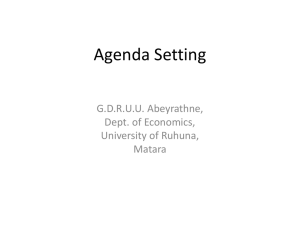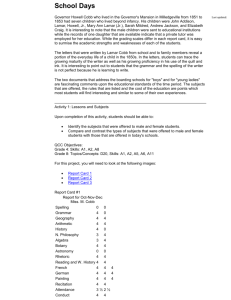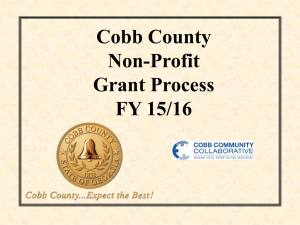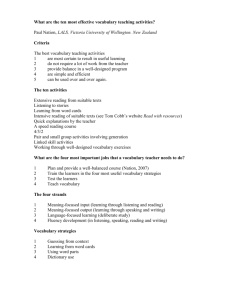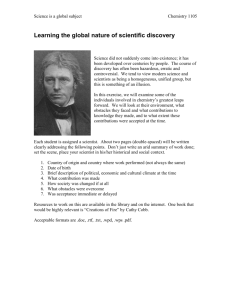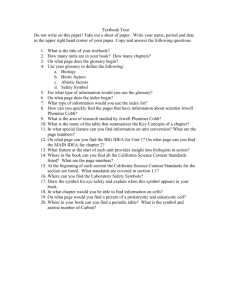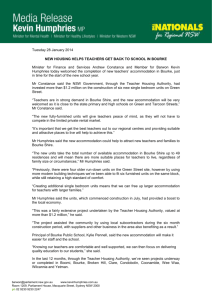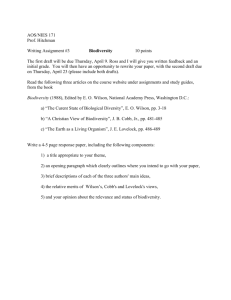Bathurst to Bourke - The Cobb & Co Story
advertisement
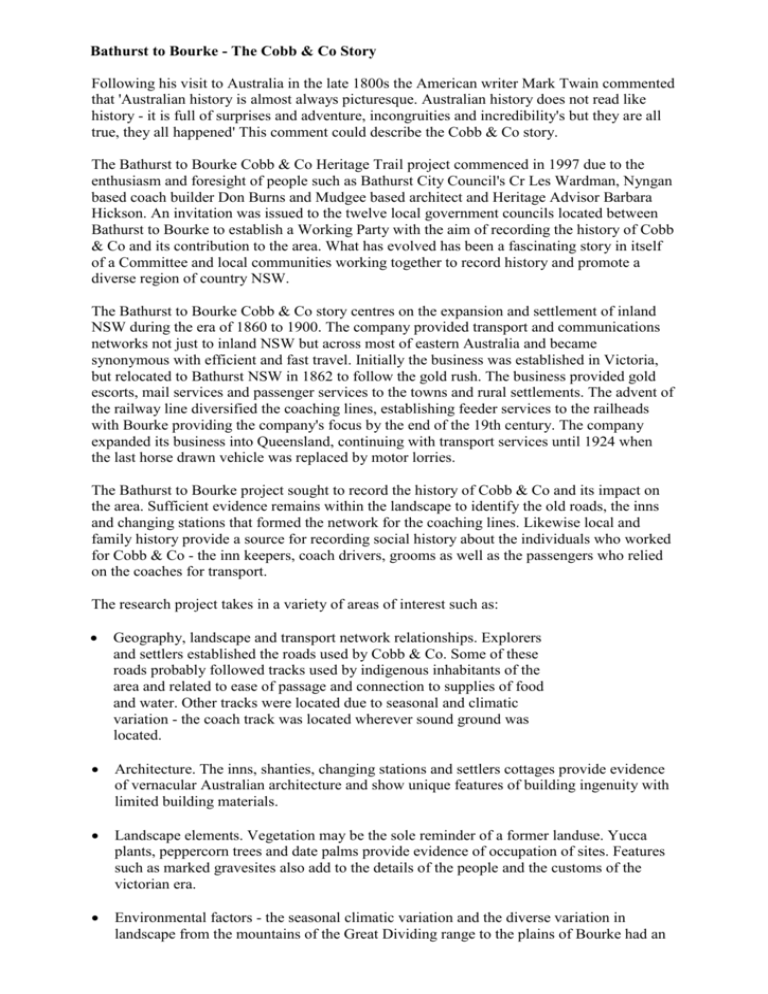
Bathurst to Bourke - The Cobb & Co Story Following his visit to Australia in the late 1800s the American writer Mark Twain commented that 'Australian history is almost always picturesque. Australian history does not read like history - it is full of surprises and adventure, incongruities and incredibility's but they are all true, they all happened' This comment could describe the Cobb & Co story. The Bathurst to Bourke Cobb & Co Heritage Trail project commenced in 1997 due to the enthusiasm and foresight of people such as Bathurst City Council's Cr Les Wardman, Nyngan based coach builder Don Burns and Mudgee based architect and Heritage Advisor Barbara Hickson. An invitation was issued to the twelve local government councils located between Bathurst to Bourke to establish a Working Party with the aim of recording the history of Cobb & Co and its contribution to the area. What has evolved has been a fascinating story in itself of a Committee and local communities working together to record history and promote a diverse region of country NSW. The Bathurst to Bourke Cobb & Co story centres on the expansion and settlement of inland NSW during the era of 1860 to 1900. The company provided transport and communications networks not just to inland NSW but across most of eastern Australia and became synonymous with efficient and fast travel. Initially the business was established in Victoria, but relocated to Bathurst NSW in 1862 to follow the gold rush. The business provided gold escorts, mail services and passenger services to the towns and rural settlements. The advent of the railway line diversified the coaching lines, establishing feeder services to the railheads with Bourke providing the company's focus by the end of the 19th century. The company expanded its business into Queensland, continuing with transport services until 1924 when the last horse drawn vehicle was replaced by motor lorries. The Bathurst to Bourke project sought to record the history of Cobb & Co and its impact on the area. Sufficient evidence remains within the landscape to identify the old roads, the inns and changing stations that formed the network for the coaching lines. Likewise local and family history provide a source for recording social history about the individuals who worked for Cobb & Co - the inn keepers, coach drivers, grooms as well as the passengers who relied on the coaches for transport. The research project takes in a variety of areas of interest such as: Geography, landscape and transport network relationships. Explorers and settlers established the roads used by Cobb & Co. Some of these roads probably followed tracks used by indigenous inhabitants of the area and related to ease of passage and connection to supplies of food and water. Other tracks were located due to seasonal and climatic variation - the coach track was located wherever sound ground was located. Architecture. The inns, shanties, changing stations and settlers cottages provide evidence of vernacular Australian architecture and show unique features of building ingenuity with limited building materials. Landscape elements. Vegetation may be the sole reminder of a former landuse. Yucca plants, peppercorn trees and date palms provide evidence of occupation of sites. Features such as marked gravesites also add to the details of the people and the customs of the victorian era. Environmental factors - the seasonal climatic variation and the diverse variation in landscape from the mountains of the Great Dividing range to the plains of Bourke had an impact on the location of tracks, the type of horse best suited to each climatic zone and the need for dependable sources of stockfeed and water. Economic, social and political history. To understand the relevance of the coaching story it is necessary to be aware of the events that were shaping the colony as it headed towards a national identity and Federation. Business management. The individuals who were the Directors of Cobb & Co have a special place in the story. Not only did two of the key people live in the Orange and Bathurst districts, but their ability as business men who turned the coaching company of Cobb & Co into the most efficient coaching business of its time is noteworthy. Technology. The evolution of the construction process of the States road network including bridge construction through to the development of the railway network. Trade skills. The craft of coach building which incorporated some eleven different trades, and the evolution of the design of coaches to suit the Australian climatic conditions. Local and family history. The stories of the individuals associated with this colourful part of history. Folklore especially relating to the activities of bushrangers during the coaching era requires attention to separate fact from fiction. The Cobb & Co project provides a transport and communications thematic concept that can be networked to the victorian era history of goldfields, pastoral settlement, bushrangers, and the growth of the Colony towards Federation. Whilst the historical context has a place in cultural tourism marketing strategies throughout the Bathurst to Bourke area, the project lends itself to several other areas of interest. These include the opportunity to consider heritage conservation promotion, Australian history as part of the education syllabus, record the contribution of a multi-cultural society and promote a sense of community ownership of the Bathurst to Bourke Cobb & Co Heritage Trail. The challenge ahead for the Working Party is to maintain the direction of the project and to guide it particularly now that interest in the Cobb & Co Heritage Trail is being generated at State and National level. The three main areas of promotion that have been identified for action are cultural tourism to develop a tourism product from the Cobb & Co concept, using the NSW Cobb & Co story as the case study for a primary school level education resource kit, and continuation of the project by fostering a sense of community ownership in the project. One of the unique features of the program perhaps lies in the geographic size of the subject area. The distance across the twelve local government areas is approximately 1000 km. The ability of the committee to focus on research and regional tourism promotion at such a broad level has been part of its success. The appeal for the project covers a wide audience from the city based audience wanting to experience country NSW, to family history and local history devotees, to horse riding and driving club members through to the tourist market wanting to see and experience part of a unique environment and landscape. The Bathurst to Bourke Cobb & Co Heritage Trail project has gone beyond the initial aim of recording and area's colonial and victorian history and has developed into a project with considerable potential to target tourism, conservation, education and community awareness using history and heritage, and in doing so capture the essence of the colourful history referred to by that 1800s tourist Mark Twain. Reproduced with permission of Cobb & Co.
